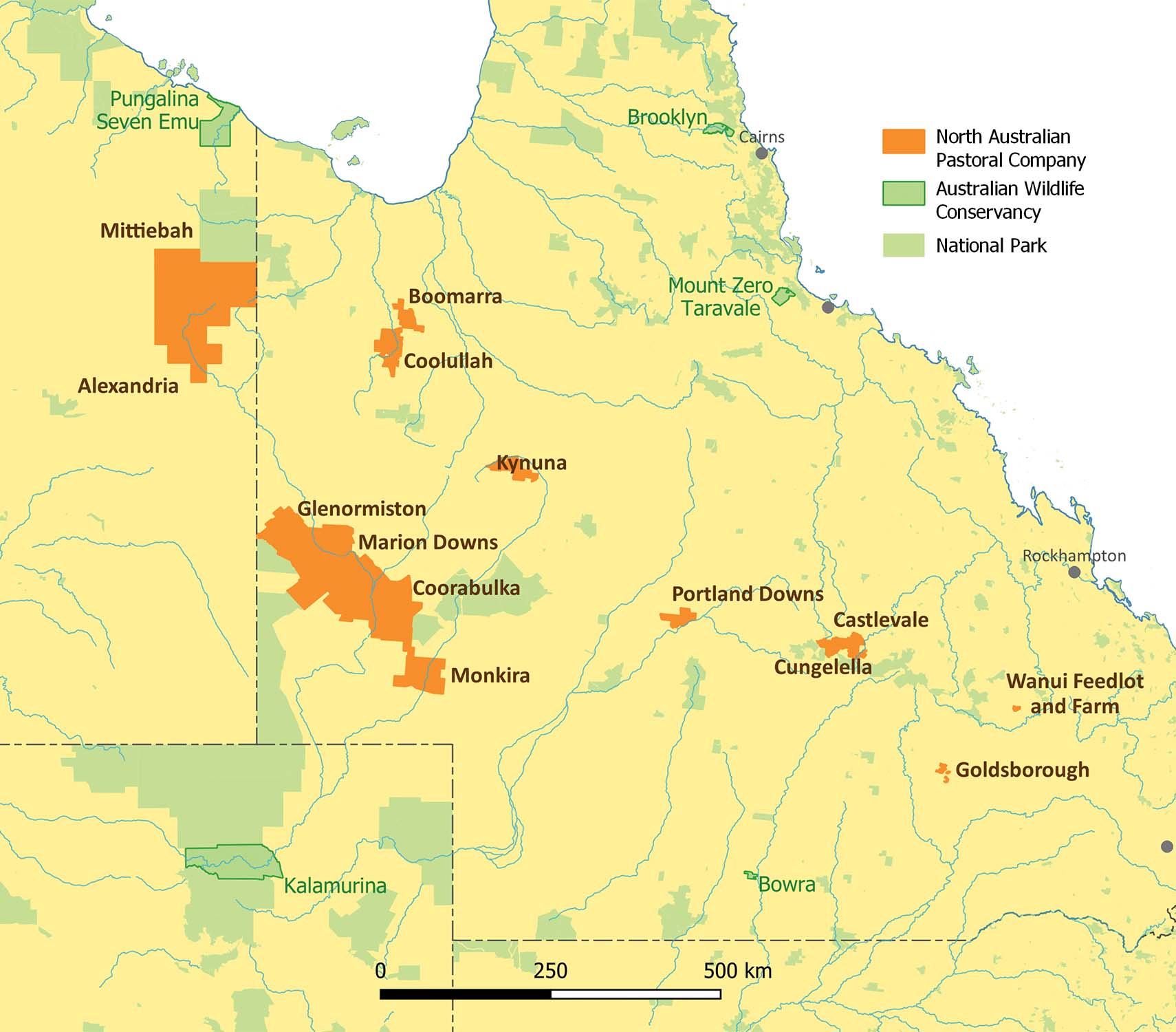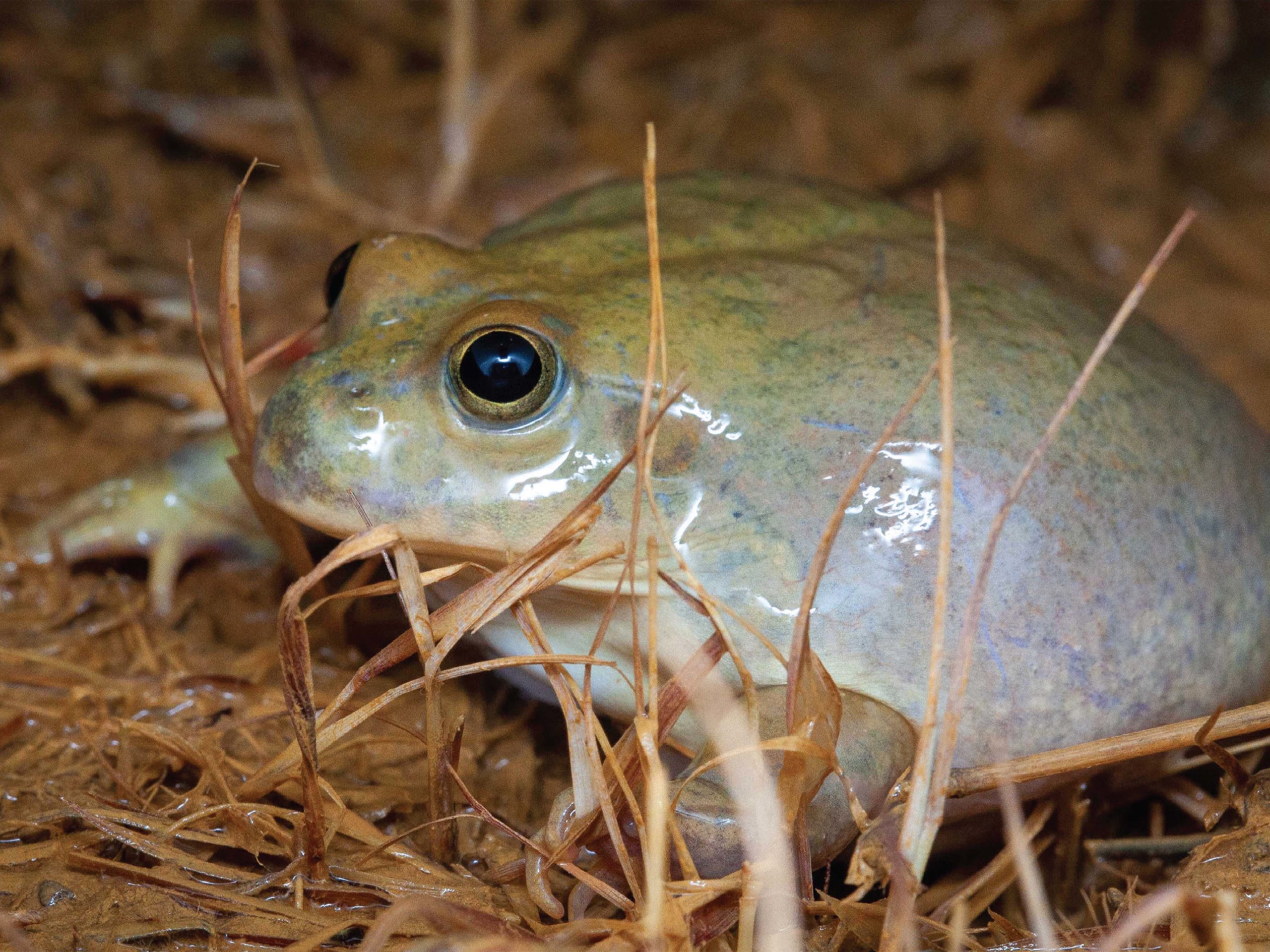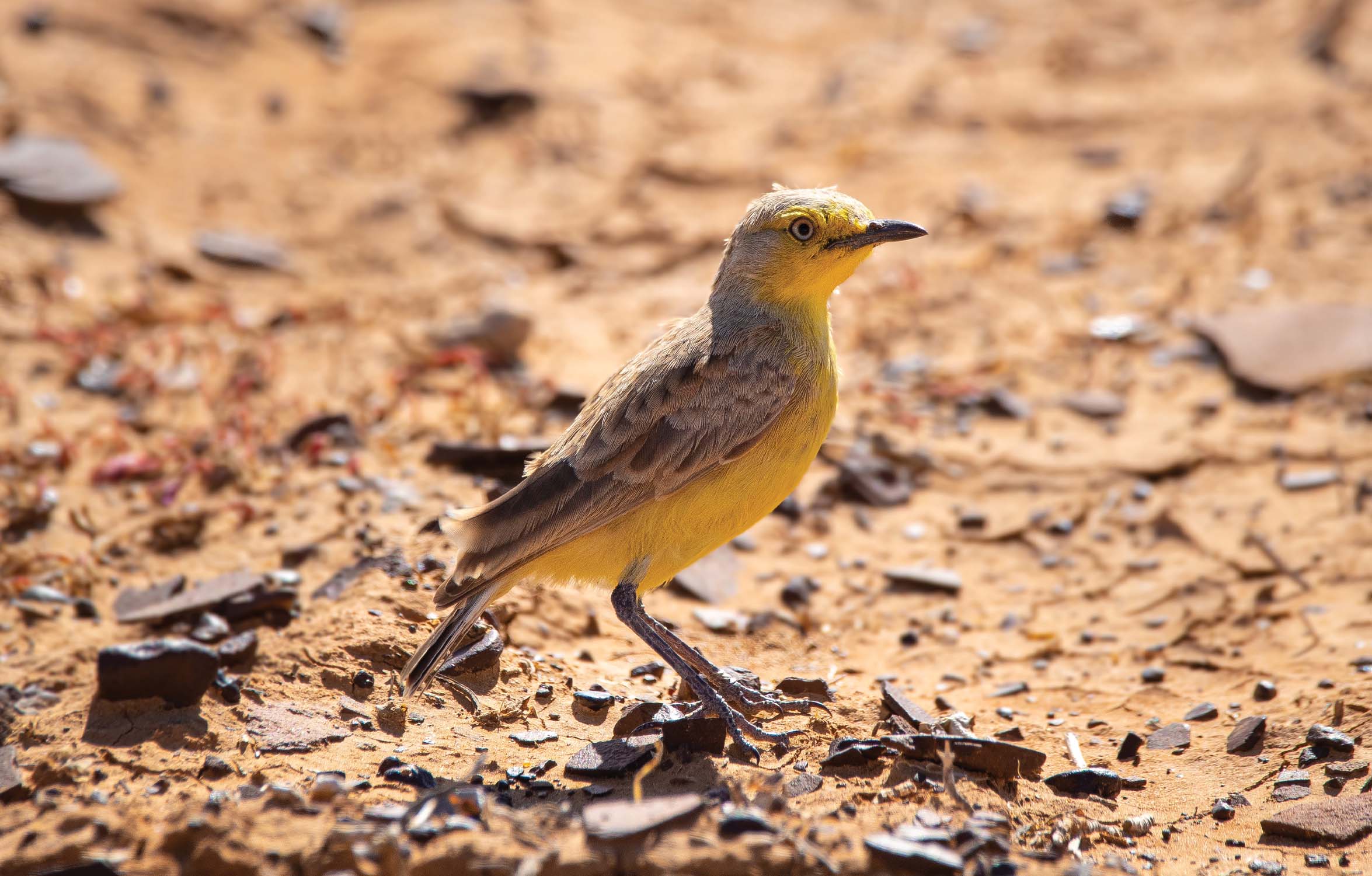By Tim Allard, Chief Executive, Dr Richard Seaton, Senior Ecologist (Pastoral Partnerships) and Dr Eridani Mulder, Senior Wildlife Ecologist
Australian Wildlife Conservancy (AWC) is proud to announce a new landmark partnership with the North Australian Pastoral Company (NAPCo) – one that will see AWC delivering and advising on conservation management activities across 6 million hectares of NAPCo’s property portfolio, effectively doubling AWC’s influence in generating positive, measurable outcomes for biodiversity.
Around 44% of Australia is covered by pastoral land. In contrast, protected areas managed by government make up only 8.5% of the country, and jointly managed and non-government nature reserves, including Indigenous Protected Areas, make up just 11%. It is evident then that a strategic, cross-sector and collaborative approach is key to significantly scaling up conservation and for securing the future of Australia’s threatened wildlife.
NAPCo and AWC are both committed to this historic partnership which represents a momentous step forward for conservation in this country. A collaborative plan is being developed that will see AWC’s strategically significant model expanded for the benefit of biodiversity.
AWC’s first priority under the partnership will be to assess the extant conservation values and undertake biodiversity surveys to confirm the presence of key threatened species. NAPCo will contribute funding based on the development of initial activity plans and budgets. The assessment and survey data will underpin the development of a biodiversity accounting tool. This tool will enable decision-makers to explicitly assess the costs and benefits of different land management options for biodiversity, production, and financial sustainability. Ultimately, the system will equip pastoralists to more scientifically manage, measure and influence the sustainability of their operations, and shift to a more fact-based land management approach that balances biodiversity and commercial outcomes.
The landmark AWC–NAPCo partnership will see the development of a biodiversity accounting tool, with the aim of equipping pastoralists to better balance biodiversity and commercial outcomes. Brad Leue/AWC
NAPCo’s property portfolio
NAPCo is one of Australia’s largest private landholders, and one of the largest and oldest cattle producers, operating across 14 properties in the Northern Territory and Queensland. The company is committed to sustainable environmental management. Given the scale of operations, these vast stations are expected to have considerable conservation value and contribute substantially to AWC’s existing conservation efforts.
NAPCo’s properties stretch across rolling grass plains, ancient red sand dunes, spinifex-dominated ridges, flood-out country, grasslands laden with blue bush and native sorghum, through Channel Country and to the fringe of Munga-Thirri–Simpson Desert. The major waterways of the Georgina, Burke, Hamilton, Mulligan and Diamantina Rivers carve watery pathways across the stations. One property encompasses the headwaters of the Cloncurry River and another’s homestead is on the Leichhardt River, both eventually flowing into the Gulf of Carpentaria.
 Map created by Terry Webb/AWC
Map created by Terry Webb/AWC
Conservation values
From desktop analysis of previous ecological surveys, historical records and publicly available fauna spatial distribution data, AWC scientists predict that NAPCo properties may support up to 760 vertebrate species – 99 mammal, 361 bird, 260 reptile and 40 frog species. Of these, 70 are listed as threatened.
 Brad Leue/AWC
Brad Leue/AWC
Excitingly, a total of 31 of the species predicted to occur on NAPCo properties are not currently protected on AWC properties. As such the partnership has the potential to substantially contribute to AWC’s mission: the effective conservation of all Australian animal species and the habitats in which they live. At present AWC protects 74% of terrestrial mammals, 88% of terrestrial birds, 56% of amphibians and 54% of reptiles.
Of the 31 species not currently protected by AWC, 15 are listed as threatened, including the Plains-wanderer, Carpentarian Grasswren, and the small but ferocious Kowari and Julia Creek Dunnart. In addition, several NAPCo properties support some of the last remaining wild populations of the Bilby in Queensland, and a number of properties are located in bioregions poorly represented in the National Reserve System.
A Kowari sniffs the night air as it emerges from a Bilby burrow. Brad Leue/AWC
Preliminary surveys
In September 2020, at the invitation of NAPCo, AWC ecologists undertook a preliminary ecological assessment of two of the company’s properties. Coorabulka (637,000 hectares) and Monkira (373,000 hectares) stations are located in south-west Queensland in the Mitchell Grass Downs and Channel Country bioregions.
 Brad Leue/AWC
Brad Leue/AWC
Field surveys were led by Senior Wildlife Ecologist Dr Eridani Mulder and involved deploying camera traps and undertaking observational surveys for a broad array of fauna. A total of 51 bird, 10 reptile, 7 mammal and 6 frog species were recorded. Threatened Bilbies, Kowaris and Pink Cockatoos were detected, as well as rare or specialist species such as Black Falcons, Inland Taipans, Eyrean Earless Dragons and Water-holding Frogs. Small mammals were abundant – of the 10,683 images of fauna collected, 2,291 were Bilbies, 139 Kowaris and 8,292 native Long-haired Rats. Kowaris were also spotted using Bilby burrows.
The Inland Taipan is a specialist inhabitant of the Channel Country and Mitchell Grass Downs bioregions. Here, one disappears effortlessly under the cracked earth. Brad Leue/AWC
Feral cats were detected in 21 camera trap images and during night surveys, utilising creeklines and rocky outcrops. Feral cats can pose a particular threat in this region after rain, as their numbers build up after population booms of the native Long-haired Rat. In tandem with the sustainable management of livestock, a successful program will therefore likely include improving ways to predict future booms of small native mammals and targeted control of feral cats in this environment.
AWC–NAPCo partnership
This landmark partnership will see AWC’s ability to precipitate positive outcomes for biodiversity doubled – with the area across which AWC works alone or in partnership leaping from 6.5 million to more than 12.5 million hectares – with conservation and pastoralism working side by side for the benefit of biodiversity. The success of such an arrangement has already been demonstrated at Bullo River Station in the Northern Territory, paving the way for this new partnership. Evidenced by the recently released IPCC report, which identified Australia as one of the most at risk regions for biodiversity loss with increased warming, Australia’s wildlife needs our help more than ever. By taking a pragmatic approach, the AWC–NAPCo partnership will contribute substantially towards AWC’s mission to effectively conserve all Australian animal species and to scaling up conservation efforts. The outcomes generated for Australis’s wildlife will enable NAPCo to advance their work and successes in sustainable environmental management and continue to focus on improving biodiversity.
The success of this partnership is important not only for the future of native wildlife but for the conservation landscape of Australia. It will demonstrate to the rest of the world what can be done – commercial pastoralism can operate and better outcomes for biodiversity can be achieved by working together.

To learn more about this partnership listen to our AWC in Conversation episode with Joey Clarke, AWC Chief Executive Tim Allard, and CEO of North Australia Pastoral Company (NAPCo) Allan Cooney .
Read and download the full issue of Wildlife Matters here.
Donate to help save Australia’s threatened wildlife and wild places
Donate Now